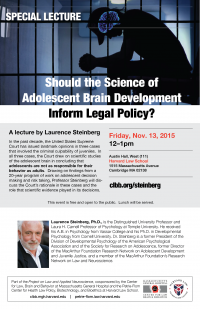By Elizabeth Kolbert | The New Yorker | August 31, 2015
C57BL/6J mice are black, with pink ears and long pink tails. Inbred for the purposes of experimentation, they exhibit a number of infelicitous traits, including a susceptibility to obesity, a taste for morphine, and a tendency to nibble off their cage mates’ hair. They’re also tipplers. Given access to ethanol, C57BL/6J mice routinely suck away until the point that, were they to get behind the wheel of a Stuart Little-size roadster, they’d get pulled over for D.U.I.
Not long ago, a team of researchers at Temple University decided to take advantage of C57BL/6Js’ bad habits to test a hunch. They gathered eighty-six mice and placed them in Plexiglas cages, either singly or in groups of three. Then they spiked the water with ethanol and videotaped the results.
Half of the test mice were four weeks old, which, in murine terms, qualifies them as adolescents. The other half were twelve-week-old adults. When the researchers watched the videos, they found that the youngsters had, on average, outdrunk their elders. More striking still was the pattern of consumption. Young male C57BL/6Js who were alone drank roughly the same amount as adult males. But adolescent males with cage mates went on a bender; they spent, on average, twice as much time drinking as solo boy mice and about thirty per cent more time than solo girls.
The researchers published the results in the journal Developmental Science. In their paper, they noted that it was “not possible” to conduct a similar study on human adolescents, owing to the obvious ethical concerns. But, of course, similar experiments are performed all the time, under far less controlled circumstances. Just ask any college dean. Or ask a teen-ager. I happen to have three adolescent sons and in this way recently learned about a supposedly fun pastime known as a “case race.” Participants form teams of two and compete to see which pair can drink its way through a case of beer the fastest. (To get the most out of the experience, I was told, it’s best to use a “thirty rack.”)
Every adult has gone through adolescence, and studies have shown that if you ask people to look back on their lives they will disproportionately recall experiences they had between the ages of ten and twenty-five. (This phenomenon is called the “reminiscence bump.”) And yet, to adults, the adolescent mind is a mystery—a Brigadoon-like place that’s at once vivid and inaccessible. Why would anyone volunteer to down fifteen beers in a row? Under what circumstances could Edward Fortyhands, an activity that involves having two forty-ounce bottles of malt liquor affixed to your hands with duct tape, be construed as enjoyable? And what goes for drinking games also goes for hooking up with strangers, jumping from high places into shallow pools, and steering a car with your knees. At moments of extreme exasperation, parents may think that there’s something wrong with their teen-agers’ brains. Which, according to recent books on adolescence, there is. Continue reading »




